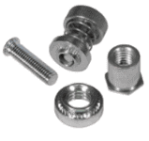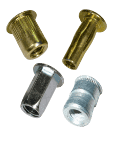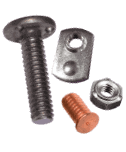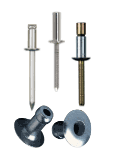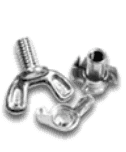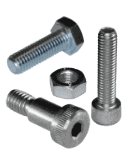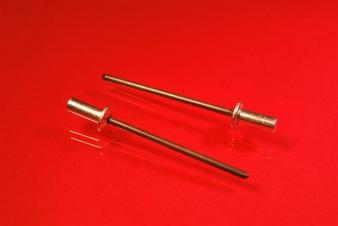Closed-End Rivet
Close end rivets provide an extremely effective way to create watertight seals for a wide range of applications. The improved tensile strength and mandrel retention provide increased performance and better overall sealing capabilities compared to open-end rivets. Some of the common applications associated with closed end blind rivets include signs, electronic enclosures, scoreboards, LED displays and more.
Contact us for more information regarding our numerous types of rivets including solid rivets, blind rivets, semi-tubular rivets and more. Or call us at 1-800-783-0910 with any questions that you may have.
Advantages of Sealed Closed End Rivets (Comparison to POP® Rivets)
Blind, closed-end rivets are mainly used when access to the base material is available from only one side and the application requires a water-resistant seal. There are many applications where the back of the base material cannot be accessed, as in fastening to walls or tubes. In cases where the back or “blind” side of the material cannot be reached, it is not feasible to use sheet metal screws, nuts, and bolts. Even the use of solid rivets requires access to the rear of the base material. Blind break-stem (POP® style) rivets provide a very valuable function in these applications, with the added benefit of being extremely cost-effective.
Cost is also a major reason why a manufacturer might choose to use a blind rivet in an application. The unit cost of a sealed blind rivet is often lower than the cost of other types of fasteners. The labor cost savings is equally impressive because they can be installed at an average rate of 15 rivets per minute. Try matching that speed with a nut/bolt installation!
For more general information on Blind Rivets, see our Standard Open End, Multigrip, and High Strength/Structural product pages.
Closed-End Blind Rivet Material Selection Process
Blind Closed End Rivet Material Options:
- Aluminum: button (dome) head rivet, polished 1100 aluminum, IFI-126 Grade 9
- Steel: button head rivet, zinc plated C1002 steel, IFI-126 Grade 3
- Stainless Steel: button head rivet, polished 300 series stainless steel (mandrel 400 series), IFI-126 Grade 51
- Aluminum/Steel: button head rivet, polished 5056 aluminum, phosphated steel mandrel, IFI-126 Grade 19
Rivet Installation Tools
Contact Us For Blind Closed End Rivets!
Contact us for more information regarding our closed pop POP® style rivet, sealed blind rivets and tubular rivets today, or request a quote for an in-depth price analysis.



